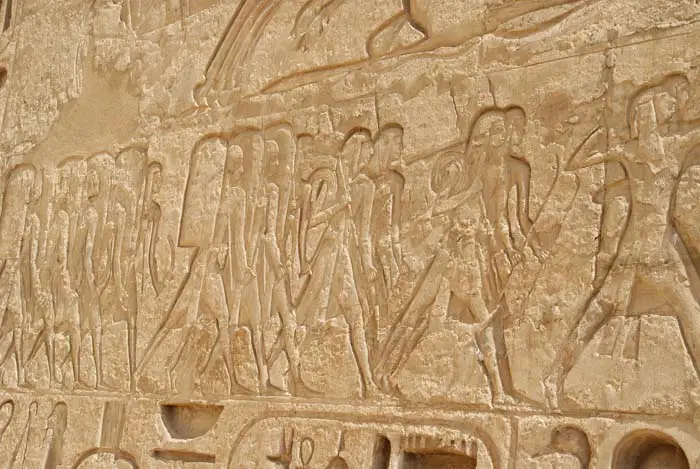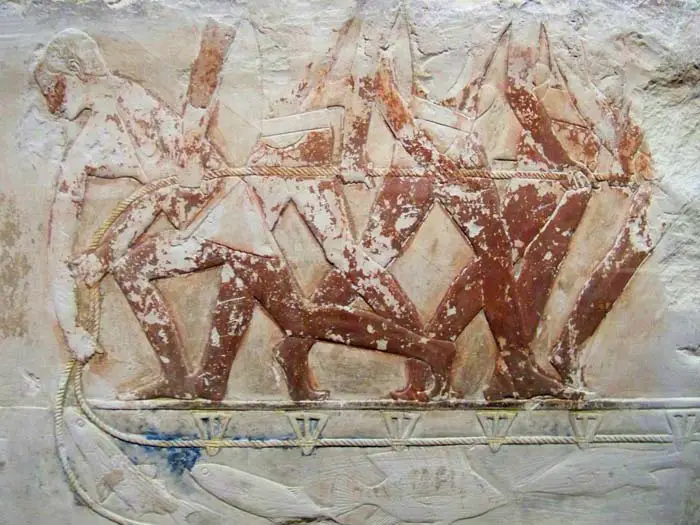Soldiers protected Egypt from outside attacks and ended social uprisings. At times, they also oversaw the lowest classes when they built the pyramids. Second sons would often join the army because they gained wealth. They could get booty from battles and the pharaoh might reward them with land for their service.
 © Tim Dawson – Relief depicting soldiers at Medinet Habu
© Tim Dawson – Relief depicting soldiers at Medinet Habu
The Middle Class: Craftsmen and Merchants
The middle class consisted of craftsmen, merchants and other skilled workers such as doctors. Merchants sold the goods made by craftsmen and doctors treated injuries. Craftsmen or artisans included carpenters, jewelers, metalworkers, painters, potters, sculptors, stone carvers and weavers. Women could work in some of the crafts, such as weaving. Craftsmen often worked in workshops with other artisans of the same type.
Peasants
Peasants were the farmers, servants and constructions workers. The government employed construction workers who built royal buildings like pyramids and palaces. Servants worked in the homes of the higher levels of society cleaning, making food, and completing other tasks.
Farmers were the most important part of the society because they raised the food that fed ancient Egypt. Pharaoh, or the nobles they worked for, provided them with food and clothing. This was an exchange for their cultivation of royal or noble land. Farmers lived in small, mud-brick houses and could rent land in exchange for a percentage of the crops from nobles or the Pharaoh.
 © Maia C – Relief of an Ancient Egyptian peasants
© Maia C – Relief of an Ancient Egyptian peasants
Slaves
At the bottom of ancient Egypt’s social structure were the slaves. Egypt did not have slave markets. Most of the time, the ancient Egyptians acquired slaves as prisoners-of-war. Slaves worked in the homes of the nobles, in the royal palace and in the temples. They also mined and quarried stone and precious materials. None of the records found to date say that slave labor built the pyramids of Giza, despite myths claiming they did.















































